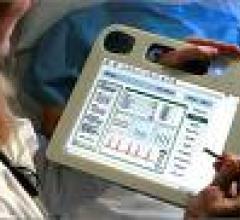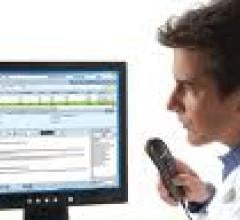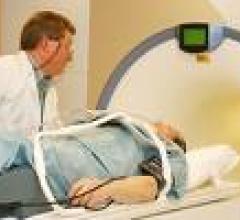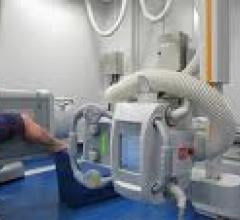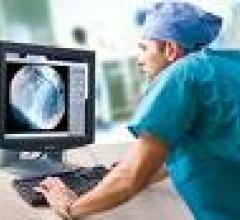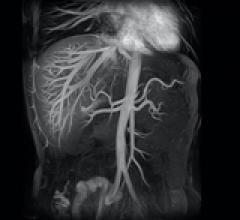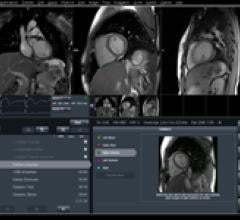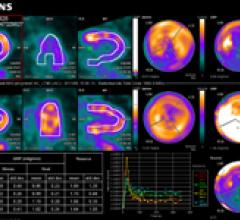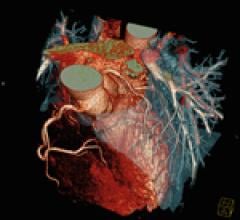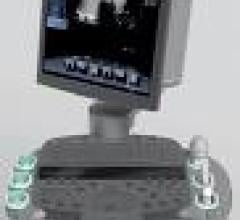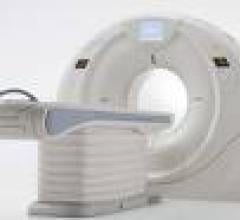March 1, 2010 - How is portal-driven technology setting new standards for customizable, role-based, context-sensitive, and knowledge-driven radiology workflow? Software solutions providers would like to know.
March 1, 2010 - Getting current and past medication history assembled and ready in case of emergencies is one of the strongest value propositions for using an online personal health records (PHR), according to data from Google Health.
March 1, 2010 - Apollo 11 Astronaut Buzz Aldrin landed for a meet-and-greet, one-hour photo opportunity session for media at Health Information and Management Systems Society (HIMSS) 2010 in Atlanta.
SPONSORED CONTENT — Fujifilm’s latest CT technology brings exceptional image quality to a compact and user- and patient ...
March 1, 2010 - “Meaningful use” is poised to be the major driver of healthcare information technology (IT) spending in 2010, in addition to other supporting factors, such as recovering economy, suggests results of the 21st Annual Healthcare Information and Management Systems Society (HIMSS) Leadership Survey.
March 1, 2010 - By empowering healthcare organizations to automatically extract unstructured clinical documentation, healthcare organizations will increase the amount of meaningful data that can be used for clinical decision making, leading to improved patient care and a reduction in overall healthcare costs.

SPONSORED CONTENT — Fujifilm’s latest CT technology brings exceptional image quality to a compact and user- and patient ...
February 28, 2010 - SIIM, which has served as a co-sponsor organization for the HIMSS annual meeting, will hold an educational seminar "Integrating Medical Images and the EHR," to help healthcare facilities prepare for the next wave of government legislation, requiring an interoperable nationwide health information system.
SPONSORED CONTENT — EnsightTM 2.0 is the newest version of Enlitic’s data standardization software framework. Ensight is ...
February 28, 2010 - Patients expressed a statistically significant preference for the taste of iohexol over diatrozoate, a feature that is especially beneficial for very ill patients whom have trouble tolerating the taste of contrast agents, concluded a recent study.
February 26, 2010 - Beginning in 2012, the Medicare Improvements for Patients and Providers Act (MIPPA) will require accreditation of ambulatory care facilities that bill Medicare for advanced imaging exams (MR, CT, PET and nuclear medicine exams). However, MIPPA does not apply to hospital providers of these services and does not include radiation therapy.
Februrary 26, 2010 - The American College of Radiology's (ACR) Task Force on Radiation Dose in Medicine urged Congress to require accreditation of all facilities that bill Medicare for advanced medical imaging and radiation oncology services, including those in hospitals, to reduce the likelihood of adverse patient events and help assure a baseline quality of care nationwide.
Did you know that approximately one-third of all the data in world is created by the healthcare industry and that ...
February 26, 2010 - A December 2009 study in The American Journal of Surgery cites that overall 53 percent of trauma transfer patients receive duplicate imaging exams at an average cost of nearly $3,000 per patient.
February 26, 2010 – During ACC 2010 Agfa HealthCare will showcase IT-enabled clinical workflow and diagnostic imaging solutions for cardiology at booth 1833.
February 26, 2010 – Diagnostic medical imaging applications and cardio PACS solutions maker TomTec is participating for the first time at Healthcare Information and Management Systems Society (HIMSS) 2010 exposition, exhibiting its multimodality CPACS solution Image-Arena.
Having the most efficient clinical workflows with enhanced diagnostic capabilities is a major goal for clinicians and ...
February 26, 2010 - Gadolinium-based contrast agents, the most common contrast agents used for MRA, have been directly linked to nephrogenic systemic fibrosis or nephrogenic fibrosing dermopathy (NSF/NFD) a sometimes fatal skin disease that occurs in patients with renal insufficiency.
February 25, 2010 - As part of its ongoing commitment to ensuring safe, appropriate and effective medical imaging and radiation therapy, the Medical Imaging & Technology Alliance (MITA) announced today a new industry-wide commitment to more expansively address patient safety in medical imaging by including new radiation dose safeguards.
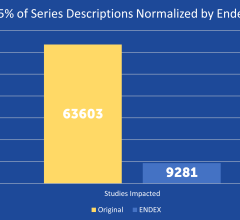
SPONSORED CONTENT — EnsightTM 2.0 is the newest version of Enlitic’s data standardization software framework. Ensight is ...
Increased productivity in cardiovascular MRI is possible with a new generation of Tim (total imaging matrix) technology and the introduction of Dot (day optimizing throughput) engine from Siemens. Tim and Dot deliver patient-centered care and significantly improve productivity across the entire MRI workflow.
The syngo Dynamic PET software with myocardial blood flow is a cardiac imaging application for the Biograph PET/CT scanners that may have significant impact on the diagnosis of patients with advanced coronary artery disease (CAD) and specifically, with those patients with multivessel disease, or those who are asymptomatic.
Offer fast speed at the lowest possible dose for cardiac applications, the SOMATOM Definition Flash dual source computed tomography (CT) scanner requires only a fraction of the radiation dose that systems previously required to scan even the tiniest anatomical details.
The 1.2 release of the ACUSON SC2000 volume imaging ultrasound system delivers nonstitched, real-time, full-volume imaging of the heart in one heart cycle. The system allows automatic extraction of reference planes from continuous cardiac volume imaging for measurement, analysis, and interpretation.
February 25, 2010 - States have limited mammography services and other early detection programs for women younger than age 50 since the U.S. Preventive Services Task Force's (USPSTF) release of new breast cancer screening guidelines late last year, according to a recent survey.
February 24, 2010 - Researchers found that when using standard 64-detector row helical scanning as a benchmark, the effective radiation dose was reduced by 91 percent from 35.4 millisieverts (mSv) to 4.4 mSv using optimized 320-detector row volume scanning.

 March 01, 2010
March 01, 2010 


